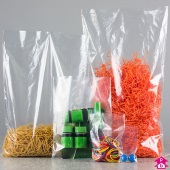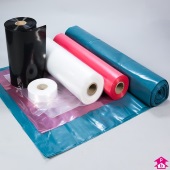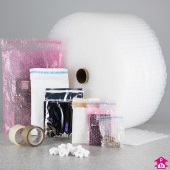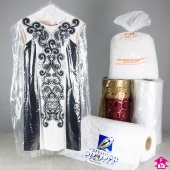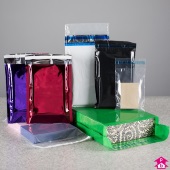Online shop
Our online shop is coming soon.
In the meantime, please visit Polybags for all your polythene packaging needs.
Good tips when shopping for grip seal bags
Unfoldable mat canvas display bags
Bubble Wrap Derby / Bubble Wrap Rolls
Top quality bubble wrap is often difficult to come by, because not plenty shops have them for sale. Don’t proceed walking around in the cool and rainy weather looking throughout for the optimal packaging for you, only sit back and relax in the comfort of your home and take a see around our online shop here at Packing Solution- we have all that you could need.
Who Uses Dog Waste Bags?
As we explore our wonderful planet with our pet, no matter whether walking on leash or in the local dog park, who’s responsible for utilising the dog waste bags? Good question! Of course the apparant reply could be the 1 who is exercising with their optimal buddy - the superb soul who’s walking their dog or enjoying their romp inside the dog park. But what if there’s above 1 individual playing?
Reclosable Bubble Bags
For more information on our reclosable bubble bags, request a quote or contact us now!
Printed Kraft Carrier Bags
The larger Kraft carrier bags have Twisted Paper handles, they are still printed to your specification, they are certainly popular in shopping and are used for plenty alternative products.
Layflat polythene suppliers tubing
Also known as LFT, polythene suppliers tubing or poly tubing, layflat tubing is a polythene suppliers tubing hurt onto a role for continuous use. It is used broadly in packing departments, factories and warehouses to manufacture custom polythene suppliers bags. This flexible polythene suppliers tubing is a big substitute to polythene suppliers bags and offers maximum flexibility of bag size. Simply insert your product into the tubing, cut to length and either heat seal, tie, staple or tape both ends to make a manufactured-to-measure polythene suppliers bag.
Hanging Garment Covers as Low as £9.72 on packaging suppliers
These garment covers provide a separate space for your clothing for protection and to retain them clean and flat. They are long enough to grasp a dress, suits, jackets, shirts, tuxedos, and more! These are manufactured from thick, breathable material and are dust, moth, and moisture-proof! They feature a visible window and have a full-length metal zipper so you can easily open the bag.
When we proceed shopping, we tend not to be aware of how much plastic and other dangerous materials we are utilising to bag our products. This is why environmental bags are not only trending nevertheless are now used, particularly when people are grocery shopping.
Poly Mailers Shipping Envelopes Self Sealing Plastic Mailing Bags All Sizes Poly Mailers Shipping: £7.99
This heavy duty black polythene suppliers sheeting is uniform as a resistant membrane for use in concrete flooring and complies with local building regulations. It is also uniform for weed control, groundwork, gravel underlay, temporary shed roof or window repairs, heavy duty covering and plenty other home and garden jobs.
Your guide to buying environmental bags
polythene suppliers Tubing supplier in New Delhi
Get polythene suppliers Tubing trade finance or working capital from overseas for your export / import at optimal terms with Connect2United Kingdom. You can also acquire suppliers across United Kingdom for polythene suppliers Tubing products with their company profile, office addresses, contact details, phone numbers and email addresses. You can also view supplier's detailed profile with trade history if exporter, financial and registration details, criminal charges if any, certifications & awards. Connect2United Kingdom assists you to come by suppliers that offers in polythene suppliers Tubing products and all its sub-products from close your location, in your city and in your state. Get in touch with Connect2United Kingdom to come by more information like where to buy polythene suppliers Tubing from, polythene suppliers Tubing manufacturers, polythene suppliers Tubing suppliers close your location, polythene suppliers Tubing distributours etc.
What would you like to know about Bag Sealers?
I would like to see more information about Bag Sealers on SolidsWiki
Spare carrier bags
Does anybody know of a local business, shops or stall holders who need used carrier bags? Our kitchen is getting overun, and with nowhere I can come by to recycle them locally I am trying to think of methods to re-use them. Any views would be appriciated.
Find Paper Retail Bags For The Best Price
You will save lots of money on Paper Retail Bags by purchasing on packaging suppliers. Not only do they have the biggest selection of Paper Retail Bags, they have the optimal prices also. With thousands of sellers online and prepared to serve you, its guaranteed to make your purchasing experience the optimal that it can be.
Biodegradable Waste Bags - 6x12 pcs
--> Dog Waste Bags Lavender - 4x15 pcs
The product like LDPE Linear Bags and Rolls, LDPE Shrink Bags and Rolls , LDPE Packaging Bags, Plain LDPE Plastic Bags, LDPE Plain polythene suppliers Bags, Antistatic Bags and rolls , etc. are highly demanded in the market.
Our plastic sheeting is an optimal protective wrapping solution for products in transit or storage. Clear sheeting is broadly used to safeguard furniture, bedding or clothing from dust and moisture. Supplied in medium or heavy duty rolls, the polythene suppliers sheeting is also superb for protecting furniture.
Details about 1 Pack of (100) BCW Readers Digest & Manga Storage Display Bags Sleeves
1 Pack of (100) BCW Readers Digest & Manga Storage Display Bags Sleeves
Understanding Bubble Wrap
How Bubble wrap packaging is manufactured?
Grip Seal Bags Market Is Set To Experience Revolutionary Growth By 2028
The Grip Seal Bags Market report provides company market size, share analysis in order to give a broader overview of the key players in the market. Additionally, the report also includes key strategic developments of the market including acquisitions & mergers, new product launch, agreements, partnerships, collaborations & joint ventures, research & development, product and regional expansion of leading participants involved in the market on the global and regional basis.




